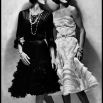Daughter of diplomats, daughter-in-law of Vinícius de Moraes, Vera Valdez Barreto Leite was the Brazilian who got to enjoy Gabrielle Chanel’s company the most.
When I arrived in Paris a few years ago I was introduced to Lilou Marquand by my friend Simonetta Fabiani. Part of a movie industry family - one brother an actor, another a director and a third Marlon Brando’s best friend, Lilou served as Maison Chanel’s press officer and right hand to Coco. As fate wanted it she also was the last person to see the Coco Chanel alive.
At many lunches chez Simonetta and the typical en-suite afternoons fuelled by well spiced Bloody Marys, the conversation naturally culminated in Lilou’s memories of Maison Chanel and the characters who gave life to the fashion institution.
I had already heard of Vera Valdez, aka Vera Barreto Leite in Paris, a legendary Chanel model who worked alongside another Brazilian called Mimi D’Arcangue (née Ouro Preto) - in the times when Mademoiselle herself managed La Maison.
However, sipping Bloody Marys, I discovered that Vera Valdez was far more than a model. With a sparkling smile, Lilou would set the tone with “Vera était le soleil de la Maison Chanel”. (Vera was the sun of the house of Chanel).
This was enough to prompt my innate Gemini curiosity. Back in Brazil the first thing I did was to try and locate Vera, to find out myself. Many phone calls and many missed opportunities followed. Always too busy with acting, Vera was never available to meet when I was in Brazil and we ended up having long telephone conversations instead.
Eventually, I ran into her daughter, the singer Mariana de Moraes, by pure chance on an Air France flight. I could not help but pressure her: “I’ve been trying to get hold of your mother for ages!”
We finally met four months ago in São Paulo, the very day the former model now actress, turned 71. Seventy one very well lived years: as Chanel’s favourite model Vera lived and represented the golden era of Saint-Germain-des-Prés.
Still in her teenage years Vera had traded Rio de Janeiro for solemn Bordeaux, following her mother, who was being transferred to a local Brazilian consulate in the South of France. The ugly-duckling-that-will-turn-into-a-swan teenager soon caught all eyes at her débutante ball. Mesmerized by the young lady’s exotic beauty, a guest approached her asking whether she was a model.
She didn’t reply - as she had never heard of “being a model” before. The following day Vera questioned her mother on the subject, who in turn purchased a copy of Vogue as they passed a newsstand to show her what “a model” was. From that moment on, Vera wouldn’t leave her mother alone. Soon enough, both ended up in Place Vendôme, more precisely in the salons of Italian surrealist Elsa Schiaparelli.
Known for her theatrical boldness, Schiaparelli asked Vera to try on a lobster-print dress (drawn by Salvador Dalí). The piece fitted the sixteen-year-old like a glove. This fascinated the designer, who not only hired Vera but also, as muse, let her inspire her last Paris collections.
“I was just a girl and had no idea who I was working for,” Vera remembers. “When I look back and think of who Schiaparelli was, the artists surrounding her, I get goose bumps!”
In 1954 Schiaparelli closed her salon doors and moved to the United States. Christian Dior was captivating the world with his New Look, and naturally Vera joined him at Maison Dior, where Saint Laurent, still a mere assistant to the master, quietly worked in the back of the room. Vera appeared all over the world wearing the New Look, inspiring shoppers who drooled over Dior’s creations in Japan, Russia, England and the United States.
It was in America that Vera met Suzy Parker, one of the most famous models of the early 20th century to end up in Hollywood. Suzy and her then boyfriend were enchanted by Vera and adopted her as protegée.
Back in Paris they drove her through the Rive Gauche in their open convertible, always ready for a night out in the clubs. Following Dior’s death in 1957, Suzy took Vera to rue de Cambon and introduced her to Gabrielle Chanel, who was in full swing back on the scene, after a long exile in Switzerland.
Their first meeting was unforgettable. Vera arrived wearing very little makeup, dressed in jeans and a red coat. Chanel glared at Suzy, whispering: “Quelle horreur... jamais le rouge!” (What horror, never, red!)
The following day, disregarding the biting comment, Vera wore the same coat again. This audacity made Mademoiselle look more closely at Vera. And it was when, coincidence or not, Chanel started to parade at least one red piece in every collection. According to Lilou, “Coco was crazy about Vera, she did whatever she wanted to do, however she wanted it.
Mademoiselle considered Vera very fun to be around and adored the intriguing nostalgic look she possessed.” The fact that Vera looked very much like a younger Coco may have had something to do with it. The designer would always create special pieces for her.
“She would parade just like a swan. I can still remember Vera arriving late, throwing on some red lipstick and eyeliner and conquering us all with the way she carried herself on the catwalk, full of allure. This simply enchanted Mademoiselle, who would stand and watch from the top of the stairs”, reminisces Lilou.
Gabrielle also enjoyed listening to Vera’s and Mimi d’Arcange’s amorous adventures. “One day Vera was late and calling me from below: ‘Lilou, come pick me up downstairs - I’m wearing jeans and a T-shirt, I just got back from a night out! Can you cover me up the stairs so Mademoiselle doesn’t see me.’ I said I couldn’t, that we would get caught... and instead handed her a raincoat!”
At the Maison Vera took the place that had belonged to Marie-Hélène Arnault in the early 50s, and ended up staying until Coco’s death in 1973. At one point when Vera took off back to the Brazil she missed so much - Chanel had Lilou bring her back, and made Vera and her daughter stay at the Ritz, right under her nose - Coco’s apartment was right next door - the maison could not operate without its sun!
Still, things could be tense between Vera and Gabrielle; the designer behaved like a mother. At times, she even grounded and fired Vera only to hire her back the week after. She was fiercely jealous of whoever got close to her pupil - and displayed a notoriously cranky attitude towards Marie-Hélène de Rothschild, the sister of one of Vera’s boyfriends.
Uneasy, unpredictable and restless while displaying an intense joie de vivre, the Brazilian headed the “Les Blousons Chanel”, the group of models who dominated the lunches at chez Maxim’s … Marie-Hélène Arnault, Darah Emmanuel, Paule Rizzo, Pauline de Merindol, Mimi d’Arcangue and Vera. Friends were many, including Jean Cocteau – with whom Vera tried opium once in his place in Palais Royal (infuriating Mademoiselle) - and Louis Malle, with whom she starred in Le Feau Follet (as an actress) and Le Souffle au Coeur (as costume designer).
In one of her many trips to Brazil, she married Pedro de Moraes, son of poet Vinícius, and modelled for Casa Canadá. Back in Paris, she became Pierre Cardin’s muse. In the 60’s she lent her face to Guy Laroche and French and English Vogue.
Another stay in Brazil let her set up the first Ipanema neighbourhood boutique together with Leila Diniz. She also worked with the “New Cinema reps” - the Brazilian Cinema Novo, both as an actress and as a costume designer, and starred as Guilherme Guimarães’ favourite model. The picture published by The New York Times, showing both of them holding hands, never leaves the designer’s daily planner.
“There’s never been a model since, like Vera,” comments Guimarães. “She was able to transform the clothes, it was not only about beauty - the way she carried herself made all the difference. Women like Vera are no longer made.”
Currently on stage at Teatro Oficina of Zé Celso Martinez Corrêa in Sao Paulo, Vera bursts into the scene as Seca, one of the leading characters of “Os Sertões” (The Deserts). Her ability to inspire is very much alive - she is yet a sun that can alight a fire.
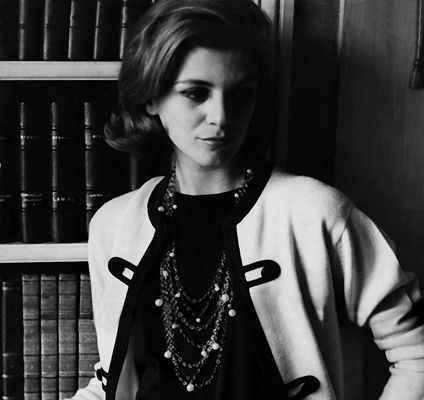 Vera Valdez with her daughter Paula for Guy Laroche - collections, late 1960s - Beschreibung des 2. Bildes
">New Glamour, British Vogue, 1960s - Photo: Frank Horvat
">Pierre Cardin Collections - Beschreibung des 2. Bildes
">In Chanel, for Vogue - Photo: Suzy Parker
">Vera Valdez with Darah Emmanuel- Paris Match - Photo: Willy Rizzo">
Vera Valdez with her daughter Paula for Guy Laroche - collections, late 1960s - Beschreibung des 2. Bildes
">New Glamour, British Vogue, 1960s - Photo: Frank Horvat
">Pierre Cardin Collections - Beschreibung des 2. Bildes
">In Chanel, for Vogue - Photo: Suzy Parker
">Vera Valdez with Darah Emmanuel- Paris Match - Photo: Willy Rizzo">Chanel - Elle France, 1950s - Beschreibung des 2. Bildes ">
 Vera Valdez with her daughter Paula for Guy Laroche - collections, late 1960s - Beschreibung des 2. Bildes
">
Vera Valdez with her daughter Paula for Guy Laroche - collections, late 1960s - Beschreibung des 2. Bildes
">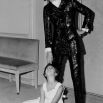 New Glamour, British Vogue, 1960s - Photo: Frank Horvat
">
New Glamour, British Vogue, 1960s - Photo: Frank Horvat
">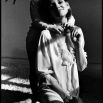 Pierre Cardin Collections - Beschreibung des 2. Bildes
">
Pierre Cardin Collections - Beschreibung des 2. Bildes
">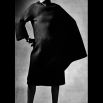 In Chanel, for Vogue - Photo: Suzy Parker
">
In Chanel, for Vogue - Photo: Suzy Parker
">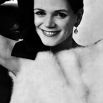 Vera Valdez with Darah Emmanuel- Paris Match - Photo: Willy Rizzo">
Vera Valdez with Darah Emmanuel- Paris Match - Photo: Willy Rizzo">